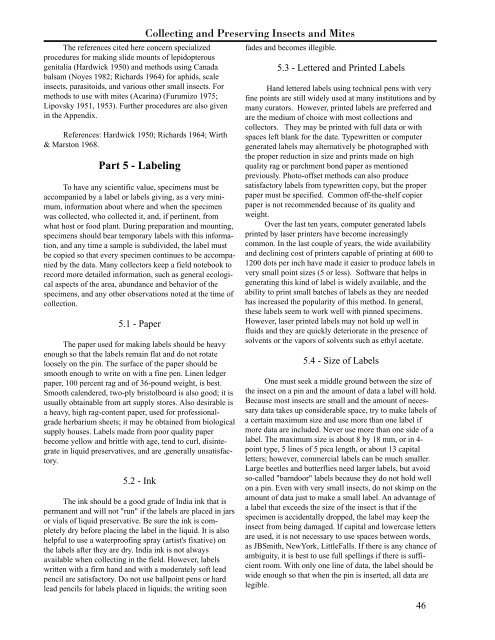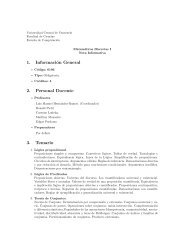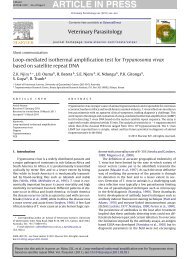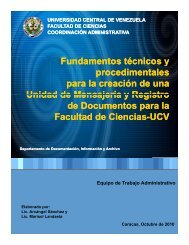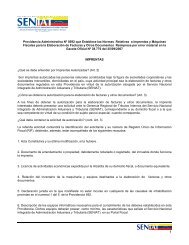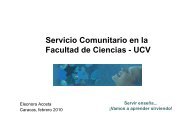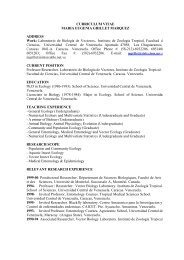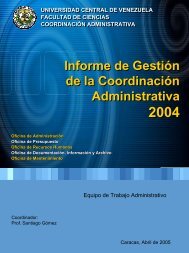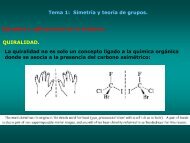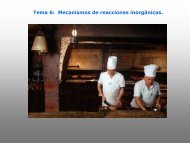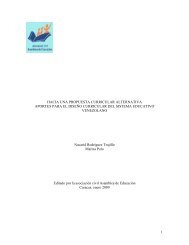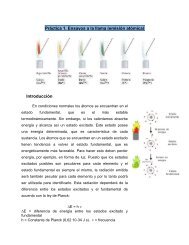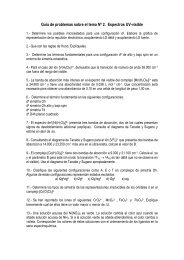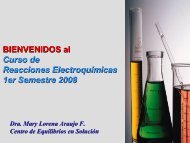Collecting and Preserving
Collecting and Preserving
Collecting and Preserving
- No tags were found...
You also want an ePaper? Increase the reach of your titles
YUMPU automatically turns print PDFs into web optimized ePapers that Google loves.
The references cited here concern specializedprocedures for making slide mounts of lepidopterousgenitalia (Hardwick 1950) <strong>and</strong> methods using Canadabalsam (Noyes 1982; Richards 1964) for aphids, scaleinsects, parasitoids, <strong>and</strong> various other small insects. Formethods to use with mites (Acarina) (Furumizo 1975;Lipovsky 1951, 1953). Further procedures are also givenin the Appendix.References: Hardwick 1950; Richards 1964; Wirth& Marston 1968.Part 5 - LabelingTo have any scientific value, specimens must beaccompanied by a label or labels giving, as a very minimum,information about where <strong>and</strong> when the specimenwas collected, who collected it, <strong>and</strong>, if pertinent, fromwhat host or food plant. During preparation <strong>and</strong> mounting,specimens should bear temporary labels with this information,<strong>and</strong> any time a sample is subdivided, the label mustbe copied so that every specimen continues to be accompaniedby the data. Many collectors keep a field notebook torecord more detailed information, such as general ecologicalaspects of the area, abundance <strong>and</strong> behavior of thespecimens, <strong>and</strong> any other observations noted at the time ofcollection.5.1 - PaperThe paper used for making labels should be heavyenough so that the labels remain flat <strong>and</strong> do not rotateloosely on the pin. The surface of the paper should besmooth enough to write on with a fine pen. Linen ledgerpaper, 100 percent rag <strong>and</strong> of 36-pound weight, is best.Smooth calendered, two-ply bristolboard is also good; it isusually obtainable from art supply stores. Also desirable isa heavy, high rag-content paper, used for professionalgradeherbarium sheets; it may be obtained from biologicalsupply houses. Labels made from poor quality paperbecome yellow <strong>and</strong> brittle with age, tend to curl, disintegratein liquid preservatives, <strong>and</strong> are ,generally unsatisfactory.5.2 - InkThe ink should be a good grade of India ink that ispermanent <strong>and</strong> will not "run" if the labels are placed in jarsor vials of liquid preservative. Be sure the ink is completelydry before placing the label in the liquid. It is alsohelpful to use a waterproofing spray (artist's fixative) onthe labels after they are dry. India ink is not alwaysavailable when collecting in the field. However, labelswritten with a firm h<strong>and</strong> <strong>and</strong> with a moderately soft leadpencil are satisfactory. Do not use ballpoint pens or hardlead pencils for labels placed in liquids; the writing soon<strong>Collecting</strong> <strong>and</strong> <strong>Preserving</strong> Insects <strong>and</strong> Mitesfades <strong>and</strong> becomes illegible.5.3 - Lettered <strong>and</strong> Printed LabelsH<strong>and</strong> lettered labels using technical pens with veryfine points are still widely used at many institutions <strong>and</strong> bymany curators. However, printed labels are preferred <strong>and</strong>are the medium of choice with most collections <strong>and</strong>collectors. They may be printed with full data or withspaces left blank for the date. Typewritten or computergenerated labels may alternatively be photographed withthe proper reduction in size <strong>and</strong> prints made on highquality rag or parchment bond paper as mentionedpreviously. Photo-offset methods can also producesatisfactory labels from typewritten copy, but the properpaper must be specified. Common off-the-shelf copierpaper is not recommended because of its quality <strong>and</strong>weight.Over the last ten years, computer generated labelsprinted by laser printers have become increasinglycommon. In the last couple of years, the wide availability<strong>and</strong> declining cost of printers capable of printing at 600 to1200 dots per inch have made it easier to produce labels invery small point sizes (5 or less). Software that helps ingenerating this kind of label is widely available, <strong>and</strong> theability to print small batches of labels as they are neededhas increased the popularity of this method. In general,these labels seem to work well with pinned specimens.However, laser printed labels may not hold up well influids <strong>and</strong> they are quickly deteriorate in the presence ofsolvents or the vapors of solvents such as ethyl acetate.5.4 - Size of LabelsOne must seek a middle ground between the size ofthe insect on a pin <strong>and</strong> the amount of data a label will hold.Because most insects are small <strong>and</strong> the amount of necessarydata takes up considerable space, try to make labels ofa certain maximum size <strong>and</strong> use more than one label ifmore data are included. Never use more than one side of alabel. The maximum size is about 8 by 18 mm, or in 4-point type, 5 lines of 5 pica length, or about 13 capitalletters; however, commercial labels can be much smaller.Large beetles <strong>and</strong> butterflies need larger labels, but avoidso-called "barndoor" labels because they do not hold wellon a pin. Even with very small insects, do not skimp on theamount of data just to make a small label. An advantage ofa label that exceeds the size of the insect is that if thespecimen is accidentally dropped, the label may keep theinsect from being damaged. If capital <strong>and</strong> lowercase lettersare used, it is not necessary to use spaces between words,as JBSmith, NewYork, LittleFalls. If there is any chance ofambiguity, it is best to use full spellings if there is sufficientroom. With only one line of data, the label should bewide enough so that when the pin is inserted, all data arelegible.46


